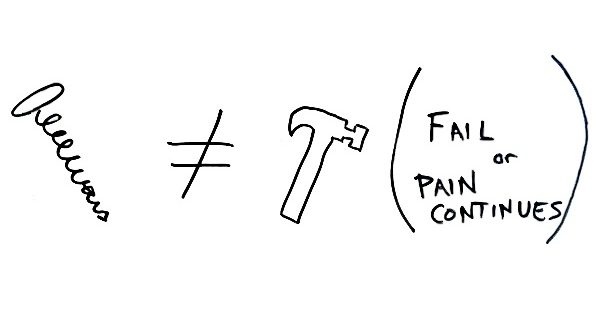
01 Oct A Holistic (and Effective) Approach to Chronic Pain Resolution: Respecting Dysfunction
Barefoot Rehab Admin: Hi! You’ve reached Barefoot Rehab. We can help you!
Chronic Pain Sufferer: Hi. Do you give prescriptions for pain medication?
Barefoot Rehab Admin: No, we don’t. We fix chronic musculoskeletal pain.
Chronic Pain Sufferer: OK, thanks. (Dead dial tone).
There is nothing that breaks our hearts at Barefoot Rehab more than a chronic pain sufferer who has lost hope.
The above conversation happened enough times for us to realize, we don’t do “chronic pain management”. We do “chronic pain resolution”.
Let’s restore hope.
Defining Words
If you’ll remember from previous posts.
Load is work you do.
Capacity is work you’re able to do.
Symptoms are nervous system signals making your conscious mind aware when load has exceeded capacity.
The fourth concept that will add completion to understanding musculoskeletal pain is: Dysfunction.
In medicine, the term for a problem is a “pathology”.
In biomechanics, the term for a problem is a “dysfunction”. Here, pathologies will be described as dysfunctions in order to be holistic and comprehensive when it comes to reducing symptoms and pain.
What is a dysfunction?
The best way to start grasping dysfunction is through pictures of course.
Being perfectly healthy, with a nice big bucket to live the life you want, with no dysfunctions looks like this:
Having one dysfunction is represented as a dysfunctional block on your graph.
Notice, the above person has a dysfunction, but no symptoms because they are below the symptom threshold.
The below person has one dysfunction and has symptoms because they are above the symptom threshold.
Why are so many people suffering? (You can’t hammer a screw)
People suffer in pain because they disrespect the Law of the Dysfunction.
Think about it.
You try stuff.
You’re in back pain, so someone says “My chiropractor has done wonders for me, you should go see him”. You try some adjustments that give you relief temporarily, but you have to keep going back and decide, “this isn’t for me”. You go see your trusted primary physician who says “You probably strained something, go get PT or take these steroids (that nuke your beneficial bacteria in your intestines)”. The steroids don’t work, so you go to the PT (physical therapist), who puts you on the standard treatment of stim, heat, ultrasound, and gives you exercises to strengthen.” Frustrated, you give up hope and decide to live in pain.
What’s the dysfunction in the first place? What type of block is on your radar screen?
Your body is your home and getting out of pain is like rebuilding your home. You’re putting out fires and building a strong, safe home that will last you to your genetic potential of 120 years. Your healthcare and fitness team is like your firemen (your emergency medical team), your carpenters/contractors (your dysfunction eliminators), and your interior designers (your fitness team giving you that beloved 6-pack and beautiful behind you desire).
The first moment you see your carpenter trying to hammer a screw (the dysfunction) with a hammer (the solution), you’d fire him.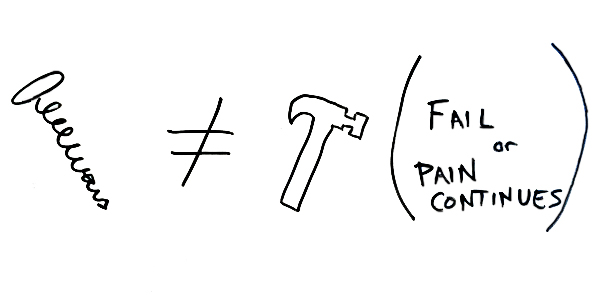
Common sense tells us to use a screwdriver for a screw, a hammer for a nail.
What is the complete and prioritized diagnosis and story of your pain?
Only then, can you choose which solution from which provider will be effective for you.
Without a complete and prioritized diagnosis and story of your pain, you might as well be hammering screws to reduce your pain and live the healthy, happy, and flourishing life you dream of.
Wouldn’t you rather your contractor build your home with the right tools for the job?
The Key to Chronic Pain Resolution (Hammering Nails, Screwing Screws, and Wrenching Nuts)
In order to resolve chronic pain, you need to:
- Understand all dysfunctions: Identify all nails, screws, and nuts.
- Choose and implement a sweet spot solution for that dysfunction: Match nails with hammers, screws with screwdrivers, and nuts with wrenches.
- Take action: Get to work.
- Respect the process: It can take 4 months to build a 2800 square foot home. Depending on your condition, it could take days to years to recover from your specific dysfunctions depending on how long you’ve let your disease process go unmanaged.
Understanding all dysfunctions means labeling your dysfunctional blocks.
Once you have labeled your blocks, you pick the best possible solution for those blocks individually (or the solution you’re willing to pursue given your lifestyle, expecting diminishing returns if you choose a less effective option).
Restoring Hope
What are your dysfunctional blocks?
Do you even know what they are?
For the providers and therapists you’ve seen, what dysfunction were they addressing for your body?
Where has the wrong tool been used?
Are you more aware how you can rebuild your body when using the tools?
 We’re curious, what is your experience with the above? Please share comments below.
We’re curious, what is your experience with the above? Please share comments below.

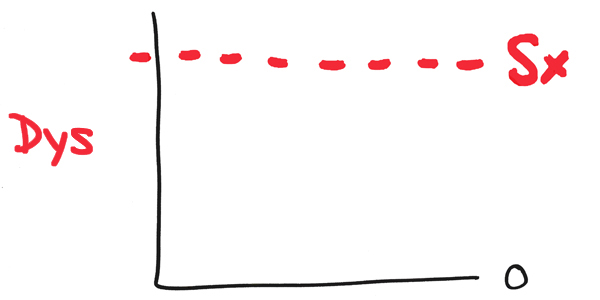
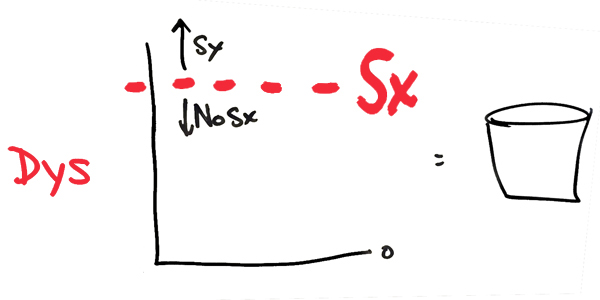
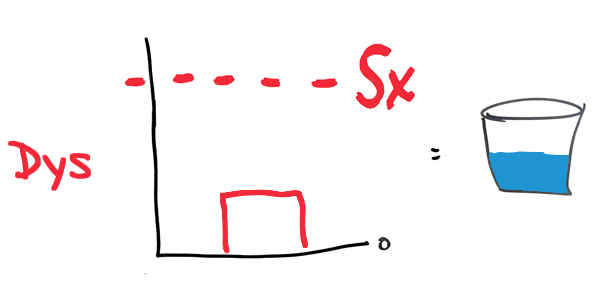
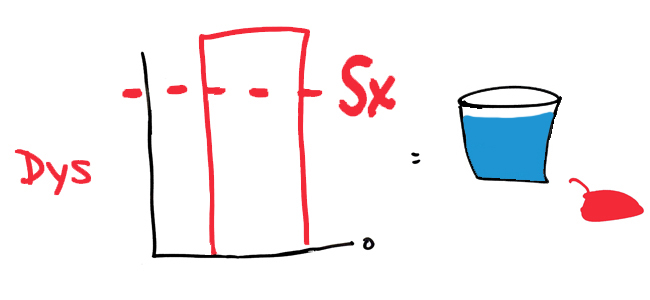
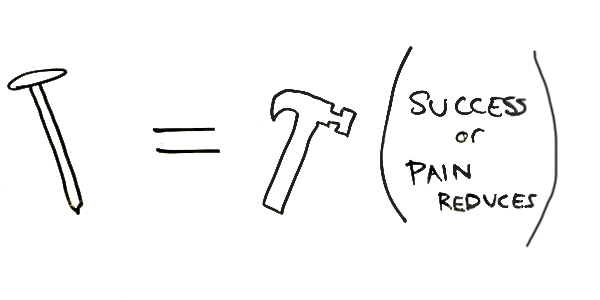
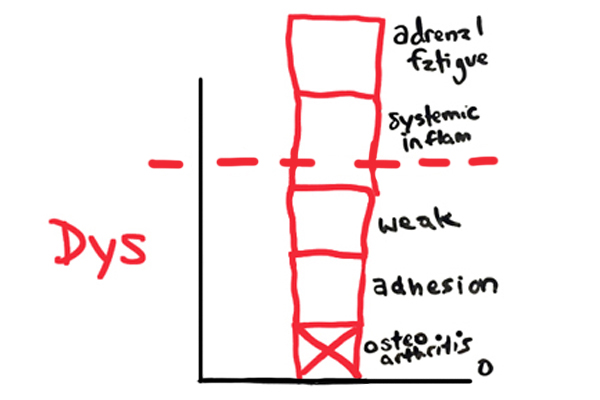
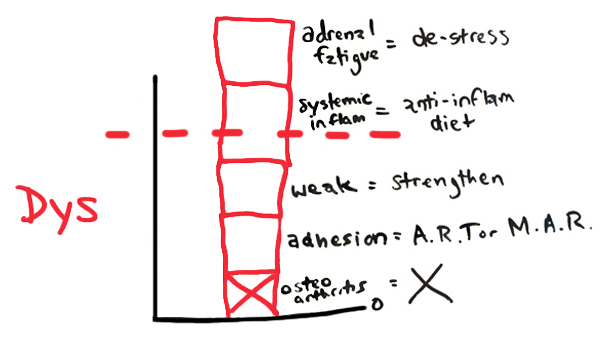
I Don't Care About Your Herniated Disc
Posted at 13:17h, 08 October[…] I do I care about is completely and holistically identifying all dysfunctions, relevant pathologies, and pieces of your pain puzzle, which may […]
The Truth About Plantar Fasciitis (and Arch Pain)
Posted at 12:22h, 19 January[…] look at the list again and discuss the dysfunction blocks that the solution points […]
2 Steps You Must Take When You're in Pain: About Symptoms
Posted at 20:23h, 26 January[…] Find Answers: You need to figure out what the problem is (Medically speaking, the problem is called a “pathology” or biomechanically speaking, the problem is called a “dysfunction“). […]
Case Study: Frozen Shoulder Success
Posted at 20:29h, 03 February[…] Nail –> Hammer (metaphor for using the proper tool for the proper problem) […]
The Chiropractor with the Broken Back: Individualizing Fitness To Teach Respect
Posted at 14:14h, 15 February[…] I remembered when I first learned that what a structural dysfunction feels like and that it needs to be […]
How to Relieve Lower Back Pain
Posted at 17:46h, 22 February[…] too far away to come in for a diagnosis for their pain and begin to resolve all of the individual dysfunctions causing their chronic pain. Because the goddesses of legality are chirping in my ear, please know […]
Know Your Numbers: The Thigh to Chest Test
Posted at 19:28h, 16 April[…] flexion to be caused by the above tissue. Or, when range of motion does not improve, structural dysfunction such as disc or hip space-occupying-lesion, […]
Nerve Entrapment: When a Nerve Gets "Glued" to a Muscle
Posted at 22:58h, 02 May[…] testimony of one of our patients who suffered too long. While surgery helped address one of her dysfunction blocks, it didn’t address all of […]
Barefoot Rehab | The Real Cost of Your Health Care Choices: Avoiding the Medical Merry-Go-Round
Posted at 22:59h, 22 May[…] individual has pain, but has been diagnosed with structural dysfunction: osteoarthritis, disc injuries, cartilage tears, etc. These individuals tend to be older than 70 […]